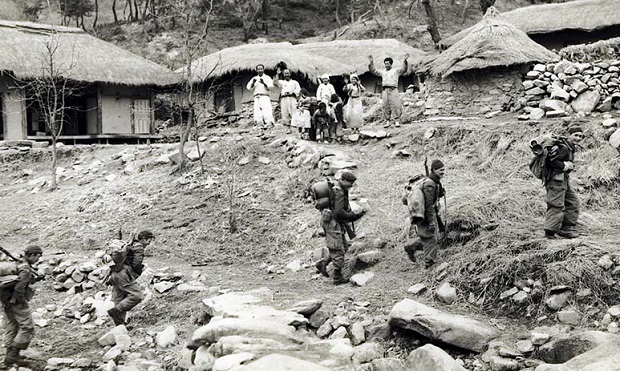By Steve Fouchard
The Battle of Kapyong saw Canadian troops in an entirely defensive position, but it nonetheless represents a significant turning point in the Korean War. The heroism and resilience of heavily-outnumbered Canadian troops, who battled enemy forces over several days in the Kapyong River Valley of Korea, turned the tide of a massive Chinese offensive.
While most Canadians are well-versed in the facts around milestones of the World Wars, such as Vimy and D-Day, Kapyong is not as well-known despite its many dramatic elements. Not the least of these is the fact that the 2nd Battalion, Princess Patricia’s Canadian Light Infantry (2 PPCLI), approximately 700-strong, held a position against a massive Chinese force of 5,000.
North Korean forces had been pushed back to positions near the Chinese border by the time 2 PPCLI had joined the fight in late 1950. However, in one of the many sudden turns of fortune that characterized the Korean conflict, the Chinese intervened in support of the North Koreans and re-captured much-lost territory in a counter-offensive launched on April 22, 1951.
South Korean troops were overwhelmed and the 27th British Commonwealth Infantry Brigade, with 2 PPCLI as its Canadian contingent, was tasked with covering their retreat through the Kapyong River valley.
The Royal Australian Regiment and 2 PPCLI were on opposite sides of what was known as Hill 677 and it was the Australians who faced the first Chinese wave. The Canadians dug in during that initial round of fighting and prepared to bear the brunt after the Australians withdrew on April 24.
There was heavy fighting April 24 and 25. In one skirmish, a Canadian company of 100 held off four times as many Chinese troops. Private Wayne Mitchell would later be awarded a Distinguished Conduct Medal for charging the enemy several times despite having been wounded.
The situation became so desperate that one company commander, Captain J.G.W. Mills requested artillery fire on his own position. A New Zealander battery fired more than 2,000 shells and repelled the Chinese while doing no harm to the safely entrenched Canadian troops.
The Canadians continued to hold the hill despite being surrounded and were kept supplied via air drops. By holding their positions, the Canadian and Australian troops bought UN forces sufficient time to regroup and paved the way for the ultimate defeat of the Chinese offensive.
When the Canadians were finally relieved by the 1st U.S. Cavalry Division, they had suffered just 23 casualties and 10 fatalities. Chinese casualties are estimated at 2,000.
